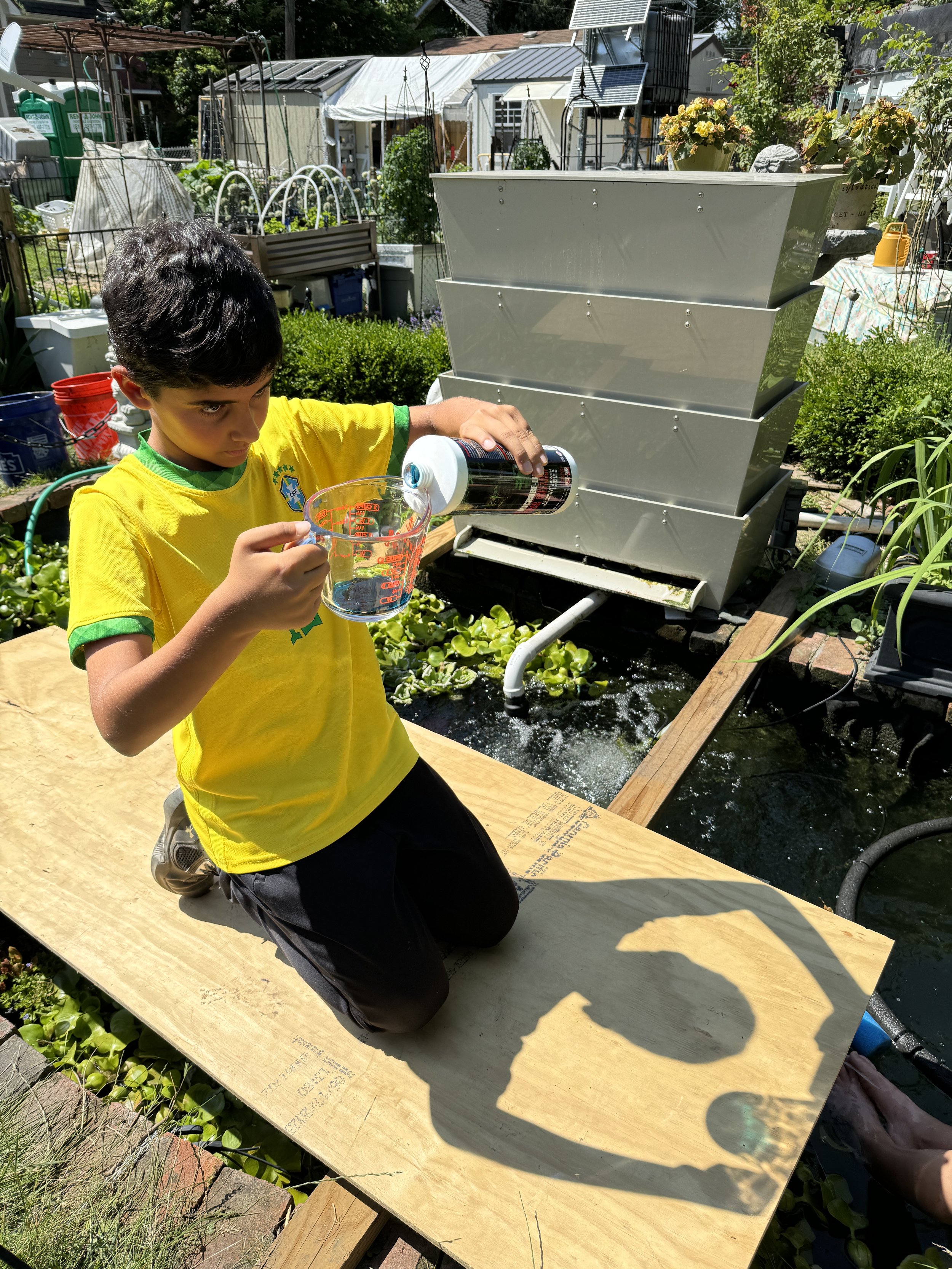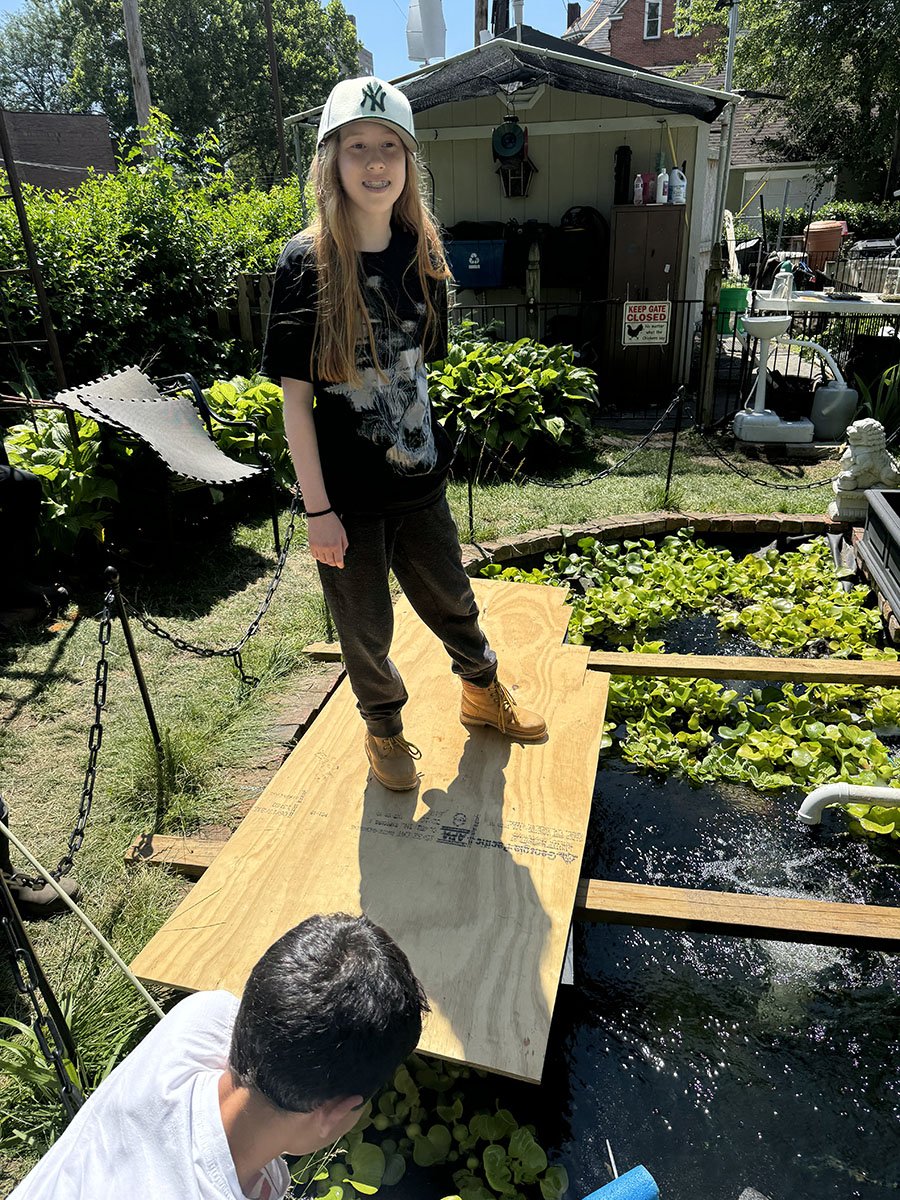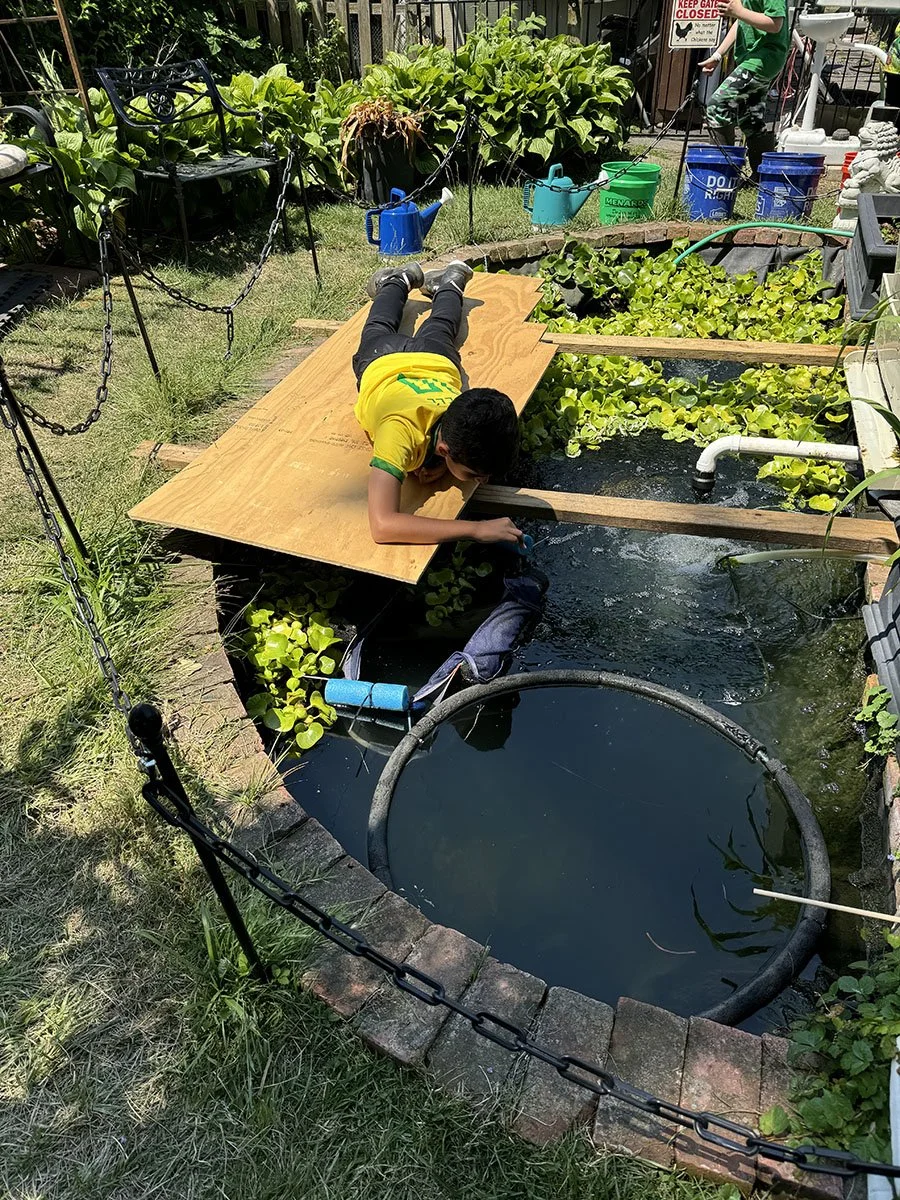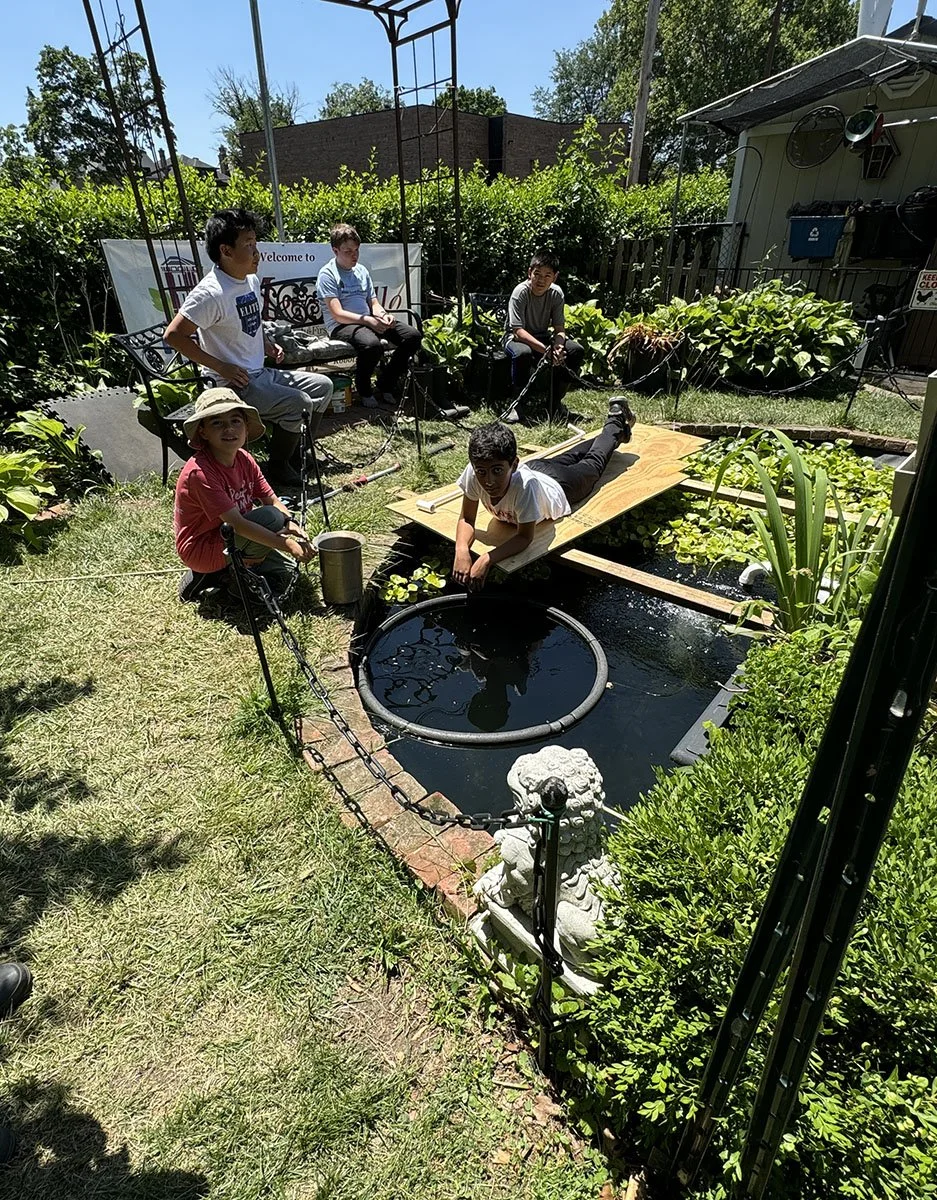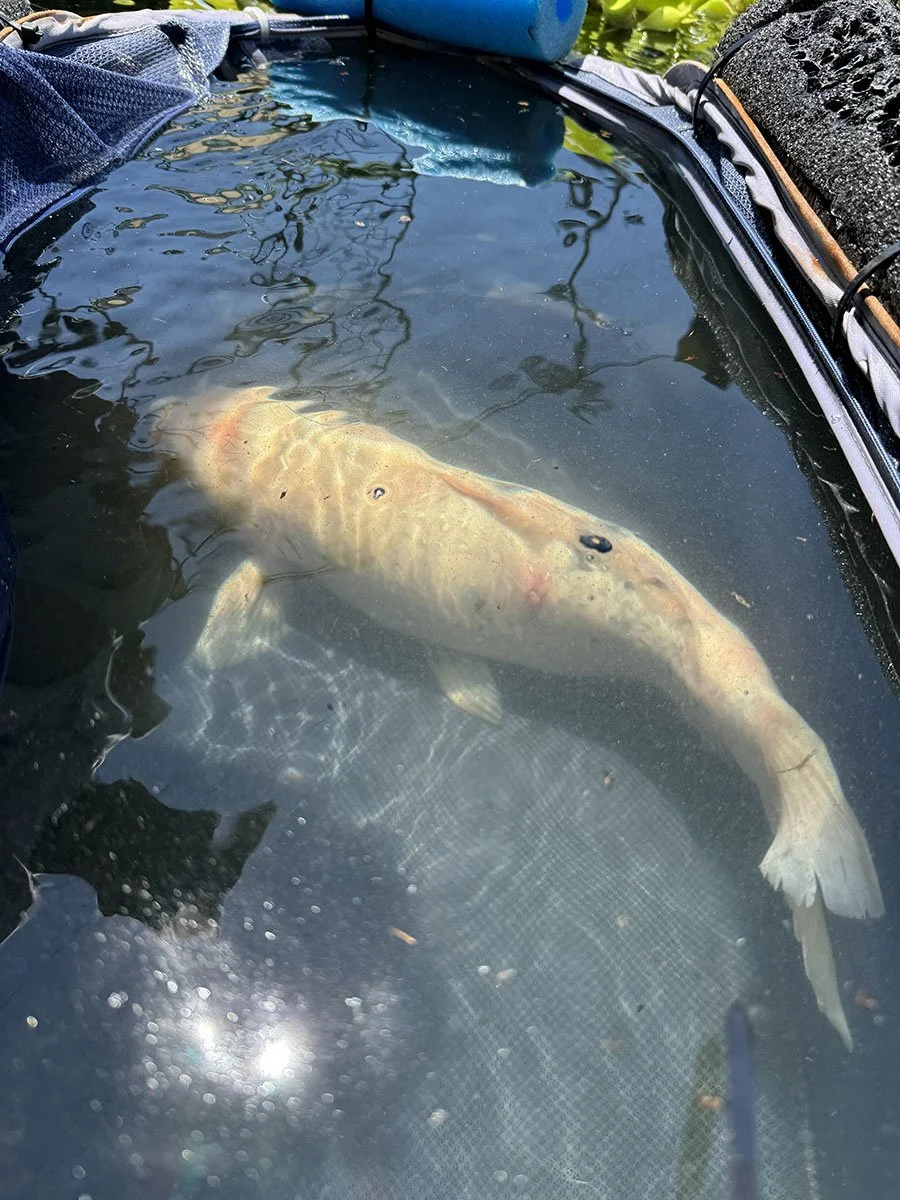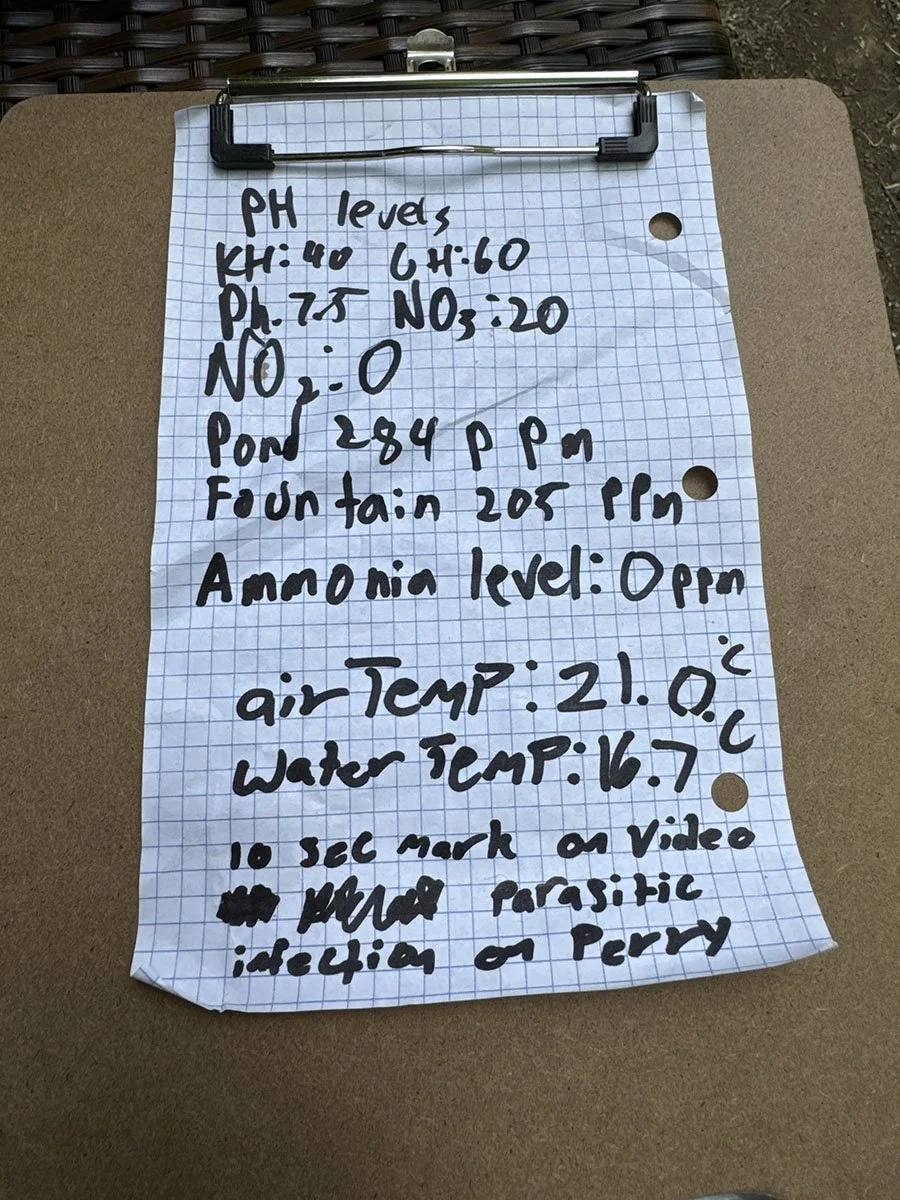How Kids Can Monitor and Protect Their Environment
Sadly, we managed to bring Ich (Ichthyophthirius Multifiliis) into our pond at Mezzacello Urban Farm. Luckily, we were hosting a bioengineering summer camp full of young, clever, eager young minds who leapt at the opportunity to help these fish with science. This is the story of how kids can monitor and protect their environment.
Oh No! Ich!
It was a routine day at Mezzacello of having the kids explore the aquatic environment of the pond, the potager garden, and the pollinator runway. Each team was using tools to discern environmental aspects of the atmosphere (trees and sky), pedosphere (Ground and earth), and hydrosphere (pond). Each of them had sensors, cameras, and drones.
Things started off well. A small outbreak of poison ivy, and a higher than normal amount of of CO and particulates in the air and a good amount of pollinators on hand. But the data from the pond was not as promising. The underwater drone they deployed with a camera was showing an outbreak of a parasite, and sluggish fish that was not eating that they named ‘perry’.
They engineered a wood and steel platform over the pond to get better access to the fish and to keep their toolkit and camera sensors handy. Then they started systematically using the sensors to take a reading of pond conditions and fish health. The platform also served as a shade tool so they could optimize their images underwater.
Using their observations, photos, underwater video, and sensor data about all of the physical and chemical aspects of the pond, the vet was able to quickly and confidently tell us what the problem was and how to quickly rectify it. The vet was very impressed with the quality of the data and the video documenting the environment and ecology of the water and the fact that they knew to photograph every fish. These kids had purpose.
Sensors and Tools
Ohio EPA Starter Pack
As part of an Ohio EPA grant Mezzacello, The Lance and Aileen Porter Foundation, and Ohio Sickle Cell and Health Association starting putting together an environmental sensor air, soil, and water tracking kit. We intend to use this kit to train high school students on understanding climate vectors and baselines and the scientific method as well as the care and use of advanced tools for monitoring environmental factors like air quality, volatiles, water purity, pollution, and soil health and viability.
I am proud that my middle school interns, Grady and Arya (14 and 12 years old), knew that this Ohio EPA kit existed. They sprang into action and used all the resources and specialized tools to empower their team to collect data, graph conditions, and capture in situ factors that proved to be so valuable — and helpful. The vet was VERY appreciative of the rigor and thoughtful collection of multiple variables.
Isolating the Fish
Once the summer campers had isolated “Perry” — their fish who they ascertained was the sickest — the vet took one look and with the data from these kids made a diagnosis in just five minutes. He also congratulated the team on safely sequestering the fish and collecting local conditions. If you have ever tried to capture a koi, you know how hard this can be!
I am looking forward to expanding my training using the Ohio EPA toolkit as well as my Project Wet and Globe training to give more kids access to tech. This will really make an impact through better understanding environmental conditions, symptoms and markers! Here is to a great summer.
Sign Up for the Environmental and Climate Justice Academy
If you haven’t already, please sign your teens up to be a part of the Environmental and Climate Justice Academy. It’s free and we still have spots available. Here is the link to get started!


